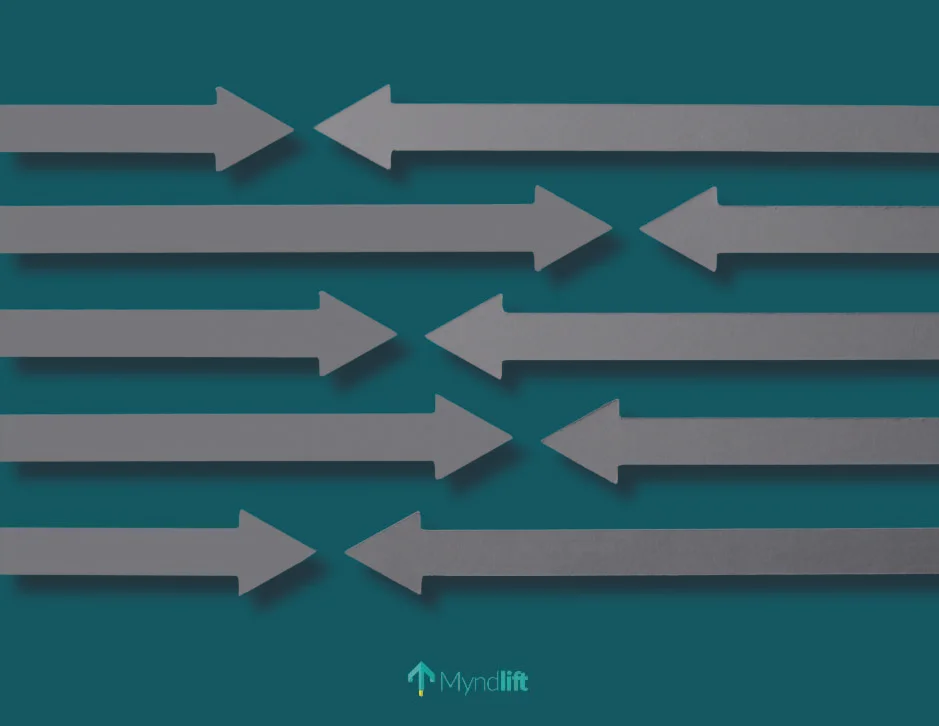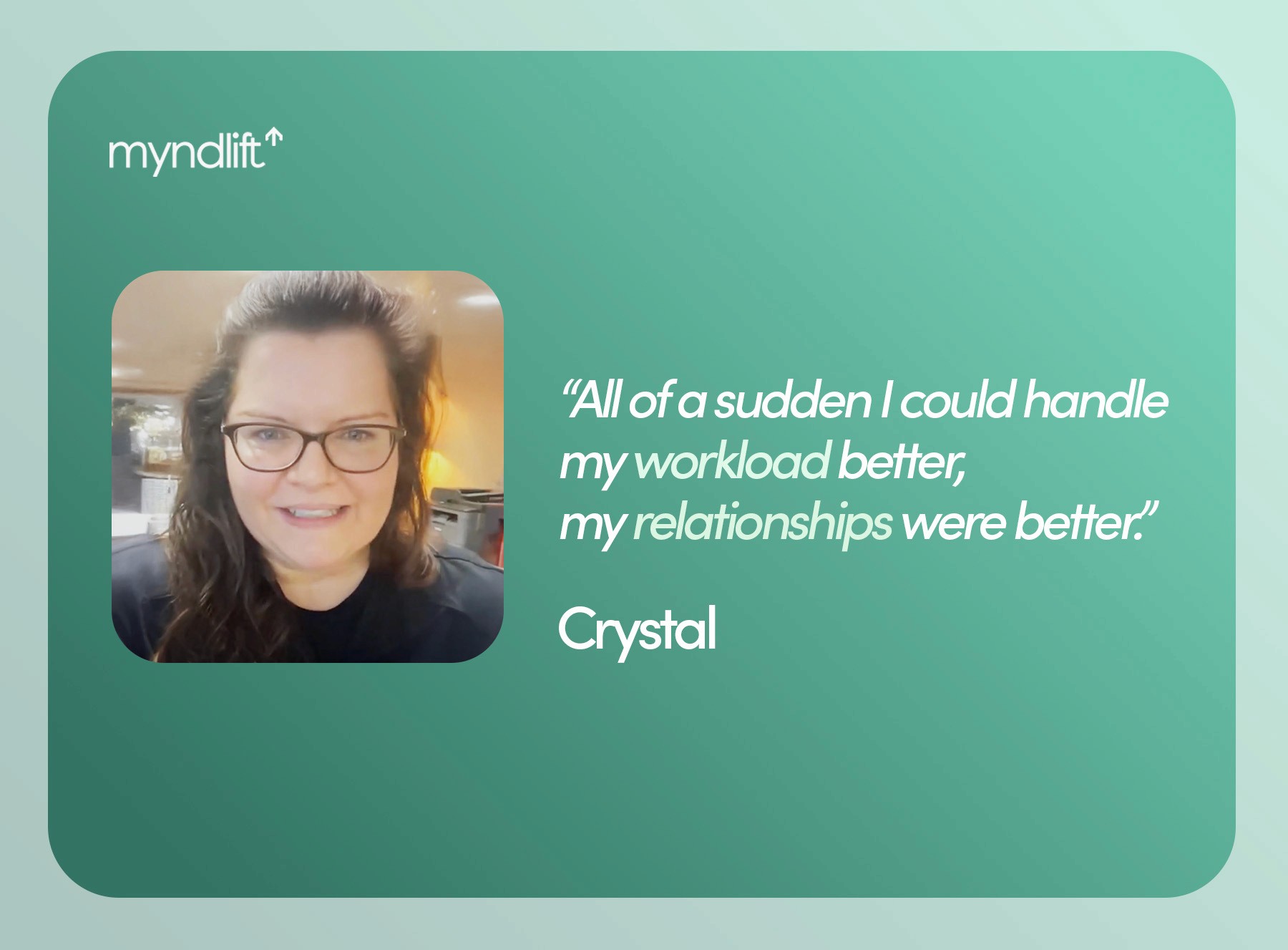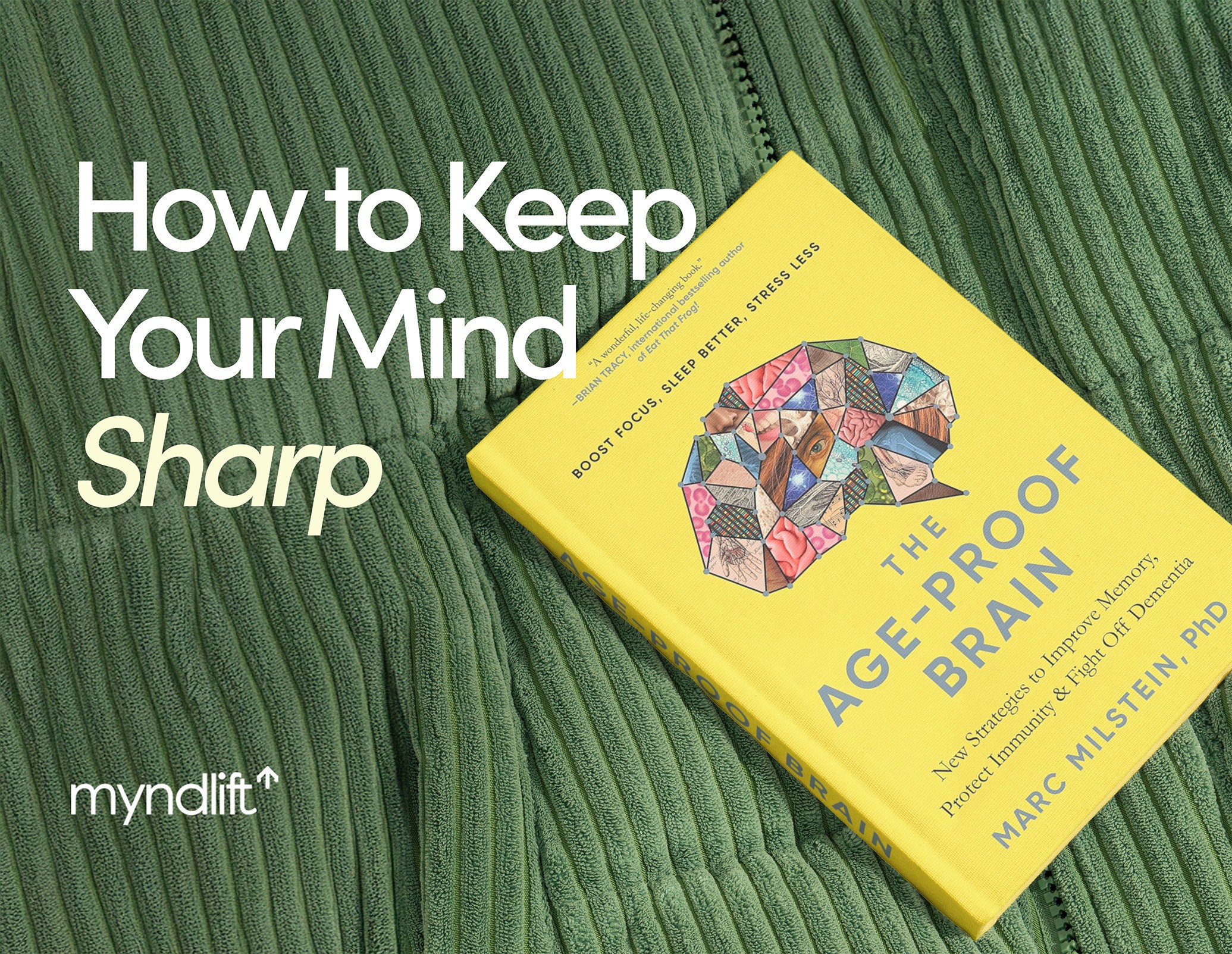ADHD paralysis, an unofficial term, used to describe the difficulty starting or finishing tasks often seen in people who struggle with ADHD. This experience is often misinterpreted as procrastination or laziness, however, it is linked to dopamine imbalance in the brain which can impact executive functions in the prefrontal cortex.
There are three forms of ADHD paralysis: Mental paralysis (sensory overload and mental blocks), Task paralysis (hesitation or lack of motivation), and Choice paralysis (overthinking and indecision due to too many choices).
The strategies mentioned in this article are not a replacement for professional care. If you are finding your ADHD is unmanageable and debilitating, you should contact a mental health provider.
Do you find yourself struggling to get things done? Can’t seem to get the ball rolling on doing housework or that task that’s been sitting on your to-do list for days? Maybe you’re feeling so overwhelmed with what to do and how to start that you just feel frozen.
This could be a sign of attention deficit hyperactivity disorder (ADHD) paralysis. ADHD paralysis is neither a medical term nor an official symptom of ADHD. It is, however, a feeling that may be experienced by those with ADHD.
ADHD paralysis might seem like simple procrastination – a trait often tied to anxiety – or laziness – which could hint at depression. However, it represents a real challenge of starting or finishing tasks – a struggle frequently faced by those dealing with ADHD.
With this article, you’ll discover the complexities of ADHD paralysis and find effective strategies to break free and overcome it:
What is ADHD Paralysis?
ADHD happens to be one of the most common mental health disorders, affecting about 5.9% of children and 2.5% of adults worldwide. There are three types of ADHD:
1. Inattention
Those with inattentive type ADHD often have challenges with staying on task, focusing, and organization. This may also look like not listening when spoken to, being easily distracted, and not following through on instructions.
2. Hyperactivity/Impulsivity
People with hyperactive/impulsive type ADHD feel the need for constant movement and often make decisions without thinking of consequences. Some other symptoms you may recognize for this type of ADHD can include being unable to sit still, fidgeting or squirming, being overly talkative, or talking over others.
3. Combined
Combined type ADHD is diagnosed when a person exhibits and meets criteria for symptoms of both inattentive and hyperactive types. Meaning that six of the symptoms of each type must be met for this diagnosis.
Even though ADHD is most typically diagnosed in children, some adults may not even know they have ADHD as it can present differently in adulthood. It can feel like difficulty remembering to keep appointments, sticking to a job, or feeling like it’s impossible to get organized and complete tasks. Though not an official symptom of ADHD, that difficulty with even starting or completing tasks is referred to as ADHD paralysis, or “analysis paralysis”.
ADHD paralysis happens because an ADHD brain processes information differently than the brain of someone without ADHD. That difference reflects in the prefrontal cortex, the area responsible for executive functioning, which is a set of mental skills that enables us to plan, focus, and control our emotions and behavior.
The neurotransmitter associated with attention and focus, dopamine, plays an important role in enabling the executive functions of the prefrontal cortex. In fact, it’s thought that lower levels of dopamine are associated with symptoms of ADHD, including difficulty focusing, organizing, staying on task, and this analysis paralysis.
So optimal dopamine levels are associated with successful cognitive control in the prefrontal cortex, meaning that the brain can process thoughts and emotions properly and help you act on those thoughts and emotions appropriately.
But if you have ADHD, you may have an imbalance of dopamine that contributes to this feeling of paralysis.
However, it’s more than just difficulty with starting tasks; several symptoms of ADHD come into play during ADHD paralysis, including:
Difficulty starting tasks, even the high-priority ones
Overthinking and overanalyzing
Poor time management
The inability to prioritize or manage tasks
Trouble listening
Easily distracted and forgetful
Avoiding tasks that require sustained attention
A feeling of brain fog or lack of clarity
As a result of these symptoms, you may become overwhelmed with decisions and choices and find that you just can’t seem to start doing anything. To an outsider, this might end up looking like laziness or procrastination, but, in fact, you’re struggling internally.
Which brings us to our next point.
ADHD Paralysis vs. Procrastination
ADHD paralysis and procrastination can look very similar. The main difference between the two is that procrastination may often be a choice, especially when not related to another mental disorder, like anxiety.
While many people procrastinate at one point or another, for those with ADHD, not starting or completing a task may be less of a choice and more of a symptom of the disorder.
In fact, struggling with ADHD symptoms like difficulty focusing or maintaining attention can lead you to distraction or feeling so overloaded with information that you just “shut down”.
Shutting down and avoiding tasks is not always a conscious decision for those with ADHD, the same way procrastination may be for many people. When someone experiences ADHD paralysis, it’s more about being unable to start or complete tasks due to the stress and frustration associated with having to process too much information.
Types of ADHD paralysis
ADHD paralysis can be divided into 3 ways in which it can affect your ability to function, making it appear as though you’re procrastinating.
Mental paralysis: Mental paralysis happens when you become overloaded with too many emotions,thoughts, information or experiences. This can cause a sensory overload and feel like a “brain crash,” in which you can’t figure out what to do or say next. You become mentally-blocked, unable to convey what is going on in your mind at the moment.
Task paralysis: ADHD task paralysis can happen when you feel hesitant, scared, or unmotivated by the task you need to complete. As a result, you may decide to procrastinate or avoid it by focusing on a more enjoyable activity or zoning out. This could be because the lower levels of dopamine in the brain can make it difficult to feel motivated and rewarded, especially by tasks you may find mundane.
Choice paralysis: Choice paralysis happens when you’re faced with too many choices and have to make a decision. This is the most common type of ADHD paralysis that is associated with the “analysis paralysis.” You overthink or over-analyze the situation and struggle to make a decision.
5 Effective Strategies for Overcoming ADHD Paralysis
Along with reaching out to a mental health professional, there are many coping techniques and strategies that you can use to help you when you feel stressed and overwhelmed. Some effective strategies for dealing with ADHD paralysis are:
1. Planning and writing out tasks
It’s easy to become overwhelmed when you feel like you have so much to do and so little time to do it all. Getting organized by writing out everything you need to do and then prioritizing which tasks are most important is a great way to help you avoid frustration caused by forgetting something important or the information overload caused by too many tasks to complete.
2. Break things into smaller and more manageable tasks
Taking breaks and making things more manageable is a great way to avoid becoming frozen by the daunting mountain of tasks ahead of you. For example, if you need to clean your house for visitors you’re about to have, focus on one area at a time and make sure to take breaks. That way, instead of thinking about having to clean the whole house, you can just focus on one area at a time.
3. Schedule and make room for rewards
Many of those who experience ADHD paralysis can often experience a lot of guilt for not getting things done. That’s why when you accomplish something it’s important to celebrate that with rewards. The rewards don’t have to be anything extravagant. It can be as simple as doing something nice for yourself, getting yourself a sweet treat, or doing something you enjoy. Incorporating these rewards can help keep you motivated.
4. Make things interesting and fun
Shake things up by finding ways to make mundane chores and tasks more fun and interesting. Find ways to turn boring tasks into games (gamification) or change things up by redecorating your office or trying a new productivity app. You can also find a buddy to complete tasks with. This is called body doubling and can be used to increase motivation and accountability.
5. Seek support
If you’re struggling with ADHD paralysis, then you may want to consider seeking support from a therapist or ADHD specialist. There is no shame in asking for help and you do not have to battle your ADHD alone.
Bonus tip: Neurofeedback for ADHD
Neurofeedback might be a great way to help with symptoms of ADHD, including improved attention and focus. Neurofeedback is a form of brain training that uses an EEG (electroencephalogram) to monitor the electrical activity (brainwaves) in the brain.
There are five types of brainwave frequencies in the brain (delta, theta, alpha, beta, and gamma), and each frequency is associated with different states of consciousness, including alertness, relaxation, and sleep.
In a well-tuned brain, a particular brainwave state will arise in response to a particular context or circumstance, and the brain can be trained to produce these context-specific states in order to improve focus, optimize coping, resilience, and cognitive performance.
Scientific research has shown that people with ADHD have more theta (slow waves) and fewer beta (fast waves) than those without ADHD. This can contribute to inattention and difficulty staying on task. Thankfully the brain has the natural ability to change, adapt, and learn.
The goal of neurofeedback for ADHD is to train the brain to self-regulate and bring those dysregulated brainwaves back to an optimal level to reduce symptoms. You can learn more about neurofeedback for ADHD from here.
Conclusion
ADHD paralysis can be a struggle. It might be what is causing you unwanted stress and anxiety, while stopping you from meeting your full potential. When too many things are happening, there is too much information, or too many emotions, you may become frozen as a way of dealing with this stress. This is no fault of your own, but a result of ADHD symptoms.
By seeking professional help and practicing coping mechanisms, you can break free from ADHD paralysis and strike through a whole lot more tasks off your list. Even that large, tedious one you've been putting off since forever!
Myndlift provides a personalized expert-guided brain training program that can help you achieve your goals towards reaching improved focus and calm. Check if you’re eligible to kick start your journey with us for better brain health from here.
About the author:
Veronica Silver
Veronica Silver is a former therapist turned mental health/substance abuse writer. Her education and experience helps her write from a place of knowledge and compassion. Her goal is to not only to inform, but to get individuals to connect with the information and resources.
About the checker:
Kaija Sander, Ph.D.
Kaija Sander is a cognitive neuroscientist and scientific consultant for Myndlift. She holds a BSc in Biomedical Science with a specialization in Neuroscience and Mental Health from Imperial College London and a PhD in Neuroscience from McGill University. Her doctoral research focused on brain connectivity relating to second language learning success. She is passionate about the broader applications of science to have a positive impact on people’s lives.
References
American Psychiatric Association. (n.d.). What Is ADHD? https://www.psychiatry.org/patients-families/adhd/what-is-adhd
Bigelsen, J., Lehrfeld, J. M., Jopp, D. S., & Somer, E. (2016). Maladaptive daydreaming: Evidence for an under-researched mental health disorder. Consciousness and Cognition: An International Journal, 42, 254–266. https://doi.org/10.1016/j.concog.2016.03.017
Brenner, R., Somer, E., & Abu-Rayya, H. M. (2022). Personality traits and maladaptive daydreaming: Fantasy functions and themes in a multi-country sample. Personality and Individual Differences, 184, 111194. https://doi.org/10.1016/j.paid.2021.111194
Kofler, M. J., Sarver, D. E., & Wells, E. L. (2020). Working Memory and Increased Activity Level (Hyperactivity) in ADHD: Experimental Evidence for a Functional Relation. Journal of attention disorders, 24(9), 1330–1344. https://doi.org/10.1177/1087054715608439
Sándor, A., Bugán, A., Nagy, A., Nagy, N., Tóth-Merza, K., & Molnár, J. (2023). Childhood traumatization and dissociative experiences among maladaptive and normal daydreamers in a Hungarian sample. Current psychology (New Brunswick, N.J.), 42(11), 9509–9525. https://doi.org/10.1007/s12144-021-02223-3
Schimmenti, A., Somer, E., & Regis, M. (2019). Maladaptive daydreaming: Towards a nosological definition. Annales Médico-Psychologiques, Revue Psychiatrique, 177(9), 865–874. https://doi.org/10.1016/j.amp.2019.08.014
Smith, Z. R., & Langberg, J. M. (2019). Do sluggish cognitive tempo symptoms improve with school‐based ADHD interventions? Outcomes and predictors of change. Journal of Child Psychology and Psychiatry, 61(5), 575–583. https://doi.org/10.1111/jcpp.13149
Soffer-Dudek, N., & Somer, E. (2018). Trapped in a Daydream: Daily Elevations in Maladaptive Daydreaming Are Associated With Daily Psychopathological Symptoms. Frontiers in psychiatry, 9, 194. https://doi.org/10.3389/fpsyt.2018.00194
Somer, E., Lehrfeld, J., Bigelsen, J., & Jopp, D. S. (2016). Development and validation of the Maladaptive Daydreaming Scale (MDS). Consciousness and cognition, 39, 77–91. https://doi.org/10.1016/j.concog.2015.12.001
Somer, E., Abu-Rayya, H. M., & Brenner, R. (2021). Childhood Trauma and Maladaptive Daydreaming: Fantasy Functions and Themes In A Multi-Country Sample. Journal of trauma & dissociation : the official journal of the International Society for the Study of Dissociation (ISSD), 22(3), 288–303. https://doi.org/10.1080/15299732.2020.1809599
Somer, E., Soffer-Dudek, N., & Ross, C. A. (2017). The Comorbidity of Daydreaming Disorder (Maladaptive Daydreaming). The Journal of nervous and mental disease, 205(7), 525–530. https://doi.org/10.1097/NMD.0000000000000685
Tandon, M., Tillman, R., Agrawal, A., & Luby, J. (2016). Trajectories of ADHD severity over 10 years from childhood into adulthood. ADHD Attention Deficit and Hyperactivity Disorders, 8(3), 121–130. https://doi.org/10.1007/s12402-016-0191-8
Theodor-Katz, N., Somer, E., Hesseg, R. M., & Soffer-Dudek, N. (2022). Could immersive daydreaming underlie a deficit in attention? The prevalence and characteristics of maladaptive daydreaming in individuals with attention-deficit/hyperactivity disorder. Journal of clinical psychology, 78(11), 2309–2328. https://doi.org/10.1002/jclp.23355





